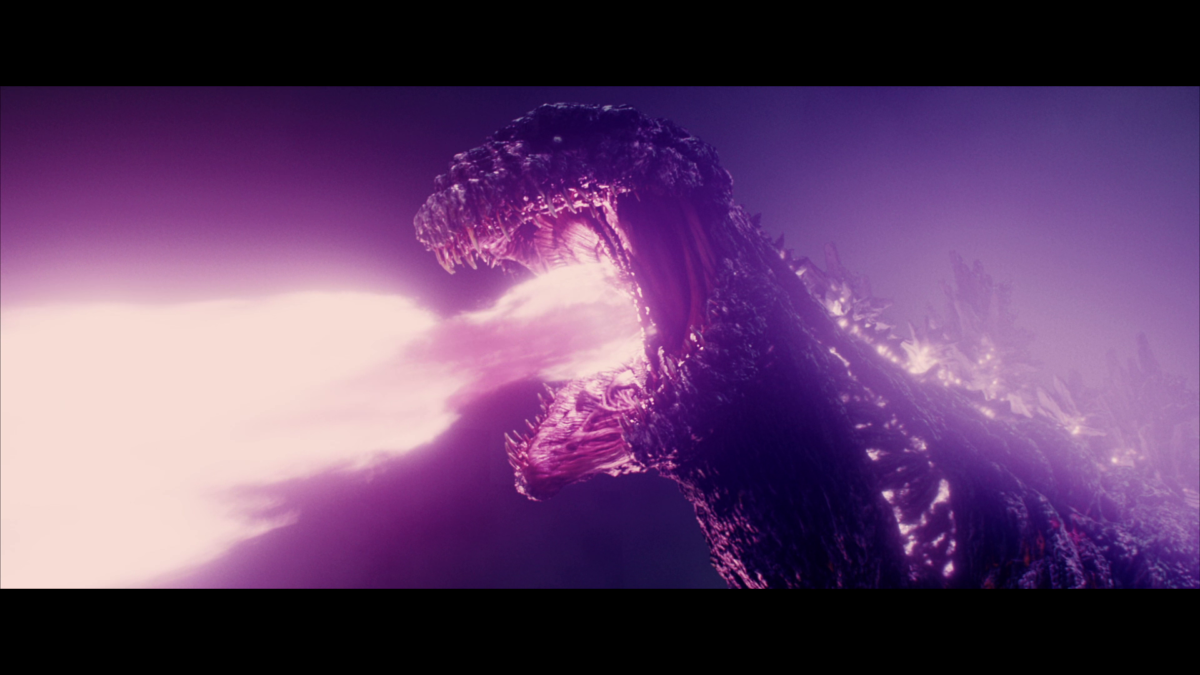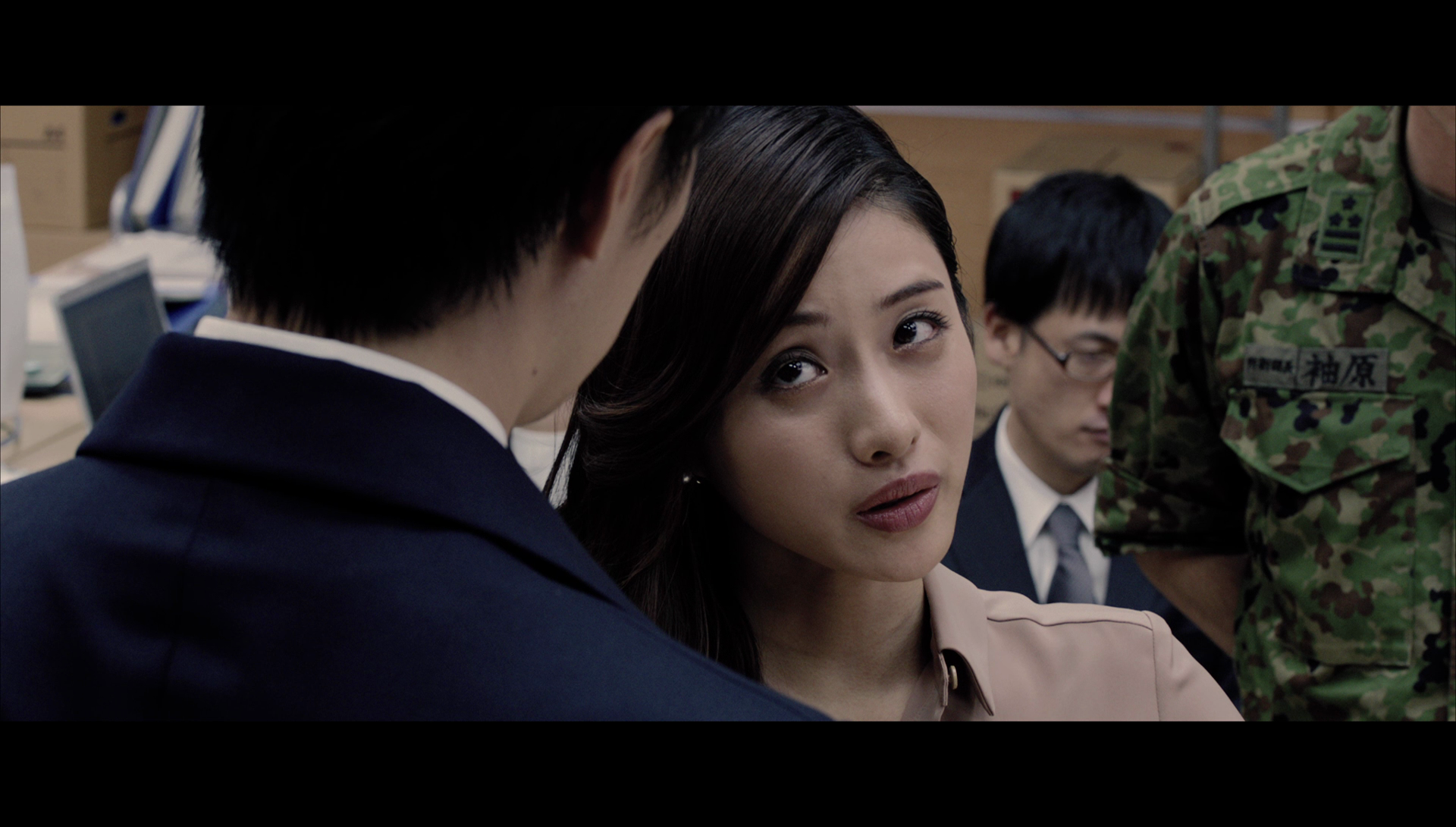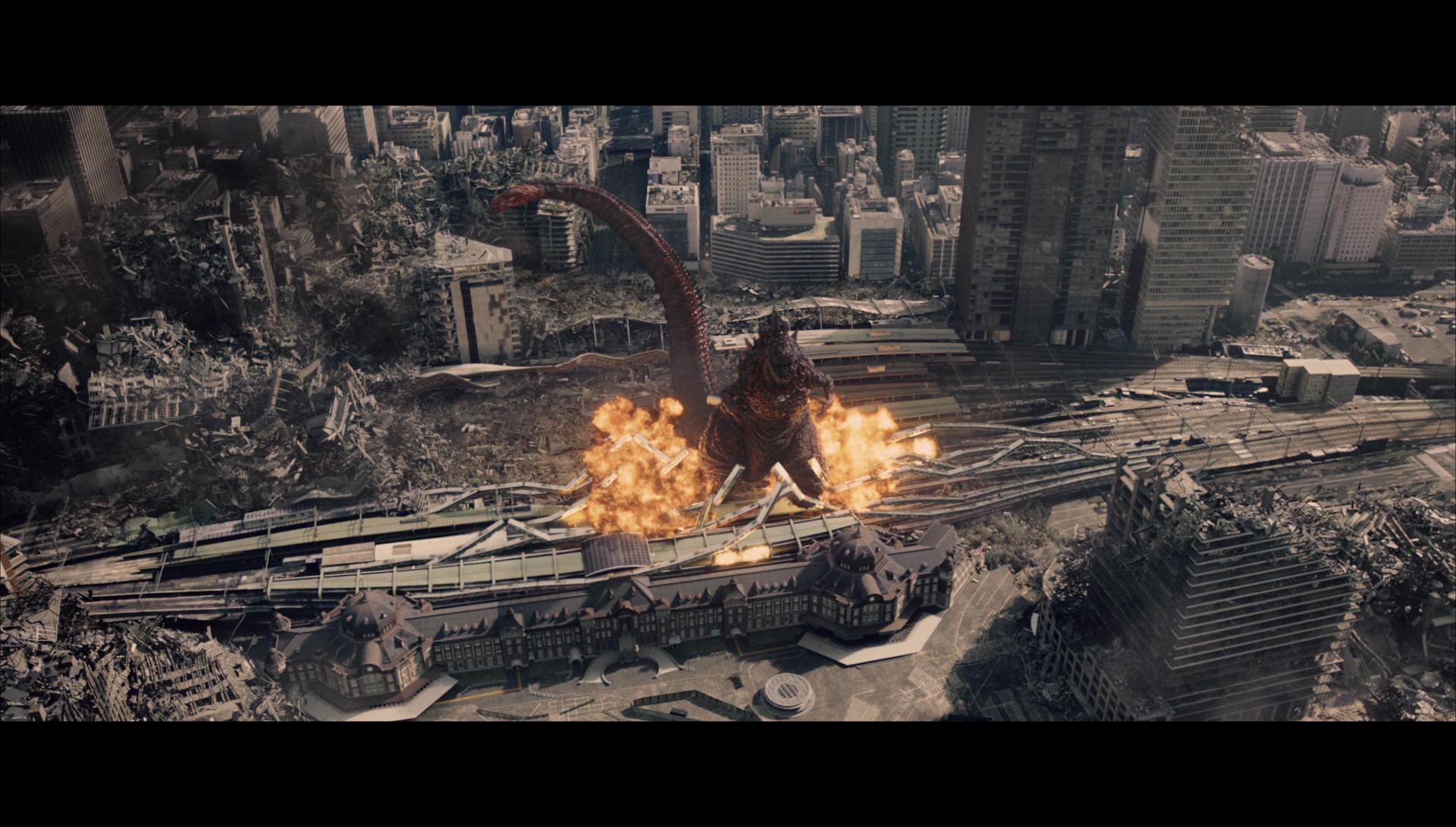Last Updated on January 22, 2021 by rob
A strange creature emerges from Tokyo harbour and wreaks havoc on land. As clueless politicians talk and talk junior adviser Rando Yaguchi (Hiroki Hasegawa) sets up a taskforce of tech savvy geeks to uncover the truth. When airstrikes and artillery attacks prove futile the Americans send in bombers but the creature – nicknamed Godzilla – proves even more destructive than imagined. Now under pressure from the US President Japan’s people face the nightmare of another nuclear strike on their country.
Writer/director Anno and co-director Shinji Higuchi do for the Godzilla series what Barbara Broccoli and Sam Mendes did for James Bond with Skyfall. That is, elevate a juvenile adventure franchise into a sombre and spectacular drama for adults while remaining faithful to the original template yet infusing all the old cliches with much needed fresh blood. The result is a slick, intelligent, principally dialogue-driven monster movie with some truly jaw-dropping CG setpieces that more than any CG driven effects movie I can remember resurrects that thrilling sense of scale in which tiny humans and their puny machines are pitted against an adversary of truly humongous size. Not only that but the film succeeds admirably in what was always the franchise’s weakest spot – the surfeit of interminable scenes in which politicos and military types would gather in offices and spout boilerplate dialogue about how they could stop the monster.
As a kid one used to accept this and the inevitable romantic subplot between the supporting players as the price one had to pay for the really cool scenes of Godzilla stomping Tokyo. The difference here is that these are now genuinely engaging. Treated initially as satire (and quite hilarious they are too) revealing Japan’s ministers to be a bunch of clueless incompetents it’s quickly over to the geeks, outsiders and troublemakers at the behest of Rando, one of the few clued up junior ministers, who sets up his own group and figures out the creature is a constantly evolving mutation spawned by radioactive waste dumped in the sea. In this respect the film goes back to the original Godzilla (1954) as a metaphor for the destructive power of the atomic bomb and for anyone familiar with the Godzilla series it’s hard to overstate just what a fantastic job the makers of this film have done in evoking all the old elements.
The goofy look of the original monsters is affectionately paid tribute too in Godzilla’s initial appearance here as, bug-eyed, it flops ungainly around in the Tokyo suburbs. The way Godzilla’s name (both the English and Japanese version, Gojira) is finally arrived at is an absolute hoot and the uneasy relationship between Japan and the U.S., with the spectre of Hiroshima and Nagasaki never far from the character’s minds, is done with a sometimes touching, sometimes funny, but above all, pragmatic recognition of the relative strengths and weaknesses of both countries. Even the traditional juvenile romance – here between Rando (as the latter finds himself unexpectedly promoted up the chain of command after his superiors get vaporised in Godzilla’s wake) and ambitious U.S. Presidential assistant Kayoko Ann Patterson (Satomi Ishihara) – is done with a playfulness and a relative sophistication inconceivable in the old days.
Equally pleasing, the film exerts a downright rigorous control over its action setpieces. The American style of force feeding the audience with an overload of CG effects right from the get go is refreshingly absent. Shin Godzilla only slowly parcels out its setpieces, each one bigger and more spectacular than the last and each advancing our knowledge of the creature’s capabilities and thus demanding a different tactical response from the humans. Some of the urban warfare scenes here display an imagination and an execution that is simply breathtaking. And as for the moment when Akira Ifukube’s original iconic score kicks in… sheer monster movie heaven! Highly recommended then (even for non-Godzilla fans).



